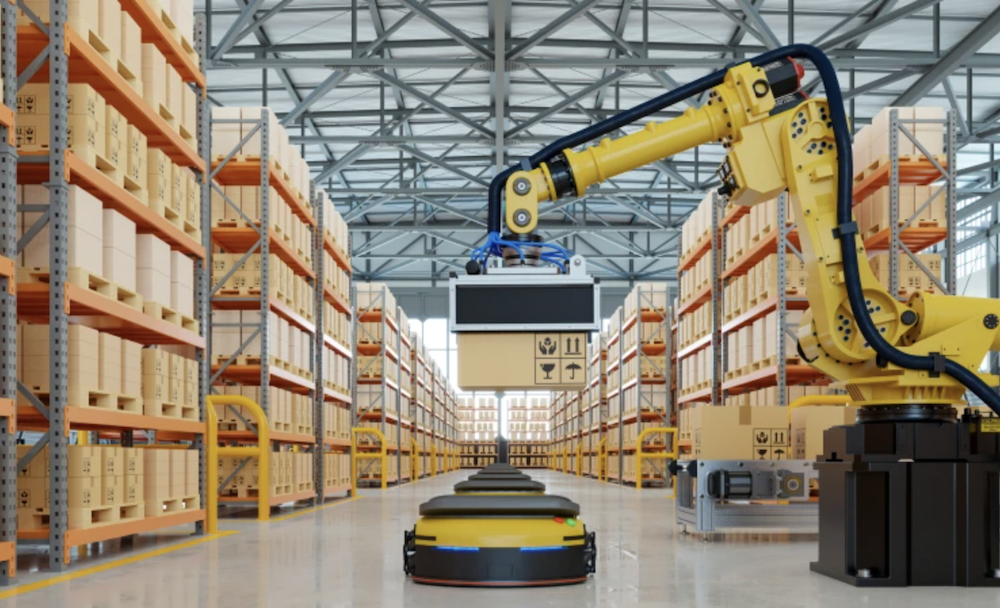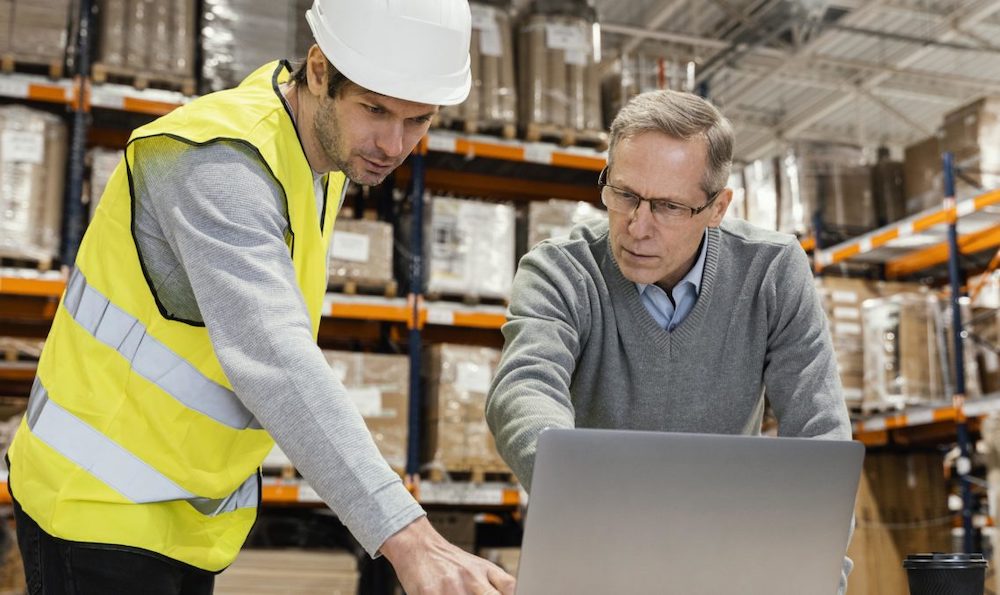Advancements in technology and emerging trends have significantly impacted the logistics industry in recent years, with rapid transformations continuing at a steady pace. As we approach 2024 and beyond, the sector is expected to undergo even more substantial changes.
Key Trends Shaping the Future of Logistics
Below are some key predictions and trends likely to influence the future of logistics:
- Expansion of automation and robotics: The logistics industry has increasingly integrated automation and robotics, a trend that shows no signs of slowing down. Companies are projected to further invest in technologies such as drones, autonomous vehicles, and robots. These innovations are poised to streamline operations, cut costs, and enhance overall efficiency in logistics processes.
- Growth of last-mile delivery solutions: Last-mile delivery, the final step in getting products to consumers, has become even more crucial with the rise of e-commerce. To meet growing demand, logistics companies are expected to adopt novel strategies, including micro-fulfillment centers, autonomous delivery vehicles, and delivery robots, enabling faster and more cost-effective delivery services.
- Increased emphasis on sustainability: As environmental concerns gain prominence, the logistics industry is anticipated to put greater focus on sustainability. This shift may involve adopting electric vehicles, using eco-friendly packaging, and implementing more efficient transportation options like intermodal shipping. Additionally, logistics providers are likely to embrace practices aimed at reducing carbon footprints and minimizing waste.
- Adoption of blockchain technology: Blockchain offers a secure, transparent method for recording transactions, which makes it an ideal solution for logistics companies. By reducing the need for intermediaries and ensuring a tamper-proof record, blockchain technology has the potential to lower costs and boost efficiency. It is expected that more logistics companies will integrate blockchain into their operations in the near future.
- Increased reliance on big data and analytics: The logistics industry produces vast amounts of data, and leveraging big data analytics can provide valuable insights for decision-making. By analyzing data related to delivery times, inventory management, and customer behavior, logistics providers can optimize their services and enhance customer satisfaction. As a result, big data and analytics are projected to become even more prevalent in the logistics sector.
Leading Logistics Tech Trends Transforming

In 2023, more than 90% of companies either adopted or planned to integrate new technologies into their logistics and supply chain operations. As we head into 2024, the demand for advanced solutions is expected to surge, reflected by the ongoing growth in the supply chain management (SCM) software market.
Recent data indicates that the SCM software market will reach a value of $20.27 billion by 2024, with a projected compound annual growth rate (CAGR) of 4.52%, pushing the market size to $24 billion by 2028.
Businesses are increasingly turning to innovations such as automation, artificial intelligence (AI), sustainability initiatives, blockchain, and the Internet of Things (IoT). By leveraging these technologies, companies aim to enhance efficiency, streamline operations, and keep up with changing customer expectations.
Acropolium, a custom software provider, specializes in delivering advanced solutions for the logistics and transportation sectors. By staying ahead of technological developments, Acropolium has successfully:
- Developed an IoT-based fleet tracking application,
- Automated an international trade platform,
- Modernized a transportation management system.
In this article, we delve into the top logistics and supply chain technology trends for 2024. Keep reading to discover their advantages and real-world success stories.
Warehouse – Automation and Robotics

Automation and robotics are at the forefront of technological trends reshaping the logistics industry. As highlighted in the 2023 MHI Annual Industry Report, these innovations remain critical, with 17% of industry professionals viewing them as potentially disruptive and others seeing them as key drivers for competitive advantage through process automation. Nearly 80% of the report’s respondents plan to invest in robotics and automation for their operational systems.
Technologies such as automated picking and sorting systems, robotic palletizers, and autonomous guided vehicles (AGVs) are revolutionizing warehouse management by reducing human error and improving efficiency. These solutions allow employees to focus on strategic tasks while mitigating risks in hazardous environments.
E-commerce leaders like Amazon and Alibaba are pioneers in integrating advanced robotics into their logistics processes. They deploy fleets of robots in their fulfillment centers to automate sorting, picking, and packing.
DHL is also embracing automation. Recently, the company invested $15 million in partnership with Boston Dynamics to automate its North American warehouses. By adopting these IT trends, DHL has achieved a 50-100% increase in labor productivity and improved facility throughput by 30%.
Warehousing – Internet of Things (IoT)
According to 2022 data, between 30% and 50% of food was lost before even reaching store shelves. However, by leveraging emerging technology trends in supply chain management, companies can significantly reduce waste and prevent product losses during transportation.
By equipping shipments, pallets, or containers with sensors, tags, and trackers, businesses can monitor goods in real-time. This allows for up-to-date information on the location, status, and condition of products, helping identify potential issues early on. Following these IT trends in transportation enhances coordination across the supply chain and helps optimize inventory levels.
In 2023, 68% of industry leaders expressed a readiness to adopt Internet of Things (IoT) technology for these purposes.
Schneider Electric, for instance, uses IoT sensors to monitor energy consumption and improve fleet management. Meanwhile, Volvo employs IoT to track vehicle shipments, and Nissan has implemented an IoT-based warehouse management system in the UK.
Transportation – AI and ML

Artificial Intelligence (AI) is currently regarded as one of the most transformative innovations, poised to drive significant changes across the logistics industry.
AI and machine learning (ML) algorithms have the capability to process both historical and real-time data, uncovering patterns, trends, and insights that can be used to make predictions. These technologies enable businesses to make smarter decisions, enhancing both efficiency and effectiveness within logistics operations.
Companies that have adopted AI in their logistics systems early on have seen substantial improvements. These benefits include a 15% reduction in logistics costs, a 35% optimization of inventory management, and a 65% improvement in service levels.
UPS, for instance, employs its ORION (On-Road Integrated Optimization and Navigation) system, which uses machine learning to optimize driver routes and reduce travel distances. Similarly, DHL leverages its “Resilience360” platform for demand forecasting, route planning, and automating warehouse processes. These AI-driven advancements are helping companies cut costs and speed up delivery times.
Transportation – Autonomous Vehicles and Drones
Autonomous vehicles and drones are becoming key elements in supply chain management (SCM) technology, aimed at enhancing safety, reducing costs, and improving delivery efficiency. Equipped with GPS, collision avoidance systems, and sophisticated flight control mechanisms, these technologies ensure accurate and secure navigation.
Labor costs constitute approximately 50-60% of last-mile delivery expenses, with driver wages averaging around $16 per hour. However, advancements in SCM technology are poised to change this.
Currently, delivering a single package via drone costs about $13.50, but future developments in SCM technology could reduce this to between $1.50 and $2. This reduction will be made possible by advancements in unmanned traffic management systems and sense-and-avoid technologies.
UPS has collaborated with TuSimple and Waymo to implement self-driving trucks for specific routes, utilizing cameras, lidar, and radar to handle deliveries with minimal human input.
Drones, though not new to the logistics sector, made headlines in 2016 when Domino’s Pizza used them for deliveries. Amazon Prime Air aimed for 10,000 drone deliveries in 2023 but has only achieved 100 due to Federal Aviation Administration (FAA) regulations. Meanwhile, Walmart has successfully conducted over 6,000 drone deliveries across seven U.S. states.
Supply Chain – Blockchain
The blockchain supply chain market is projected to grow at a compound annual growth rate (CAGR) of 45.55% from 2023 to 2030, according to a Market Research Future Report. This rapid growth is largely due to blockchain’s ability to enhance transparency and security within supply chain and logistics operations.
What sets blockchain apart from other warehouse technologies? It assigns a unique digital identity to each product, including its origin, manufacturing details, certifications, and ownership history. This provides real-time, transparent visibility into the movement of goods from the source to the end destination.
Blockchain also ensures secure, encrypted data sharing between parties, minimizing the risk of tampering or unauthorized access. Additionally, smart contracts—automated agreements that enforce compliance—help streamline operations by reducing manual oversight.
Major companies have already started integrating blockchain into their transportation operations. Maersk, for example, teamed up with IBM to create TradeLens, a platform designed to improve data transparency and reduce paperwork. Similarly, Walmart collaborated with IBM to develop Food Trust, a system that tracks the movement of food products from suppliers to stores, enhancing food safety and accountability.
Supply Chain Management – AR and VR

Augmented Reality (AR) and Virtual Reality (VR) are emerging as significant trends in transportation technology, offering numerous advantages. These technologies create safe, controlled environments for training, enabling employees to practice and learn without the hazards of real-world operations.
The use of AR and VR also leads to substantial cost savings by cutting travel expenses and increasing productivity. Additionally, companies are integrating these technologies to reduce CO2 emissions, supporting environmental sustainability.
A 2022 study found that 64% of supply chain leaders expected AR/VR technologies to positively impact their operations.
For instance, DB Schenker utilizes AR headsets to assist workers with picking and packing tasks, streamlining workflows and reducing mistakes. Walmart leverages VR headsets to recreate scenarios like Black Friday or peak seasons, providing staff with practical experience and skill enhancement.
Research indicates that VR training boosts confidence and improves knowledge retention, with test scores increasing by 10% to 15%. Businesses adopting AR/VR technology report fewer errors and enhanced productivity, with improvements in instruction overlays, remote assistance, and planning. In retail, studies show that AR-enhanced product interactions can lead to a 94% increase in purchase rates.
SCM – Digital Twins
In the realm of IT trends for supply chain management, digital twins are a pivotal technology not to be overlooked. Digital twins are virtual replicas of physical assets and processes, enabling real-time monitoring and performance enhancement. This technology aids freight brokers in optimizing routes, improving inventory management, and making more agile decisions.
Gartner’s research indicates that companies employing digital twins experienced a 30% reduction in supply chain disruptions in 2023.
What are some examples of companies utilizing this technology in warehousing?
DHL has integrated digital twins to refine warehouse operations and enhance process visibility. This approach provides real-time insights, process optimization, and predictive maintenance.
Similarly, FedEx Office partnered with Accenture and River Logic to leverage digital twins for visualizing various scenarios, boosting printing efficiency, and streamlining delivery processes. By adopting these technology trends, FedEx Office aims to enhance interactions, minimize errors and damages, and improve the overall customer experience.
Overview
As we move into 2024, the logistics industry is undergoing a transformation in the way goods are transported, managed, and delivered. Companies in the sector are adopting the latest technological trends across warehousing, transportation, and other supply chain functions to streamline operations, boost efficiency, and maintain a competitive edge.
If you’re considering integrating AI/ML, IoT, blockchain, or other cutting-edge technologies into your supply chain, reach out to Acropolium. We provide innovative, reliable, and secure platforms that comply with GDPR, adhere to ISO-certified standards, and utilize serverless solutions. Additionally, we offer subscription-based services to ensure that the development process aligns with your budgetary needs.